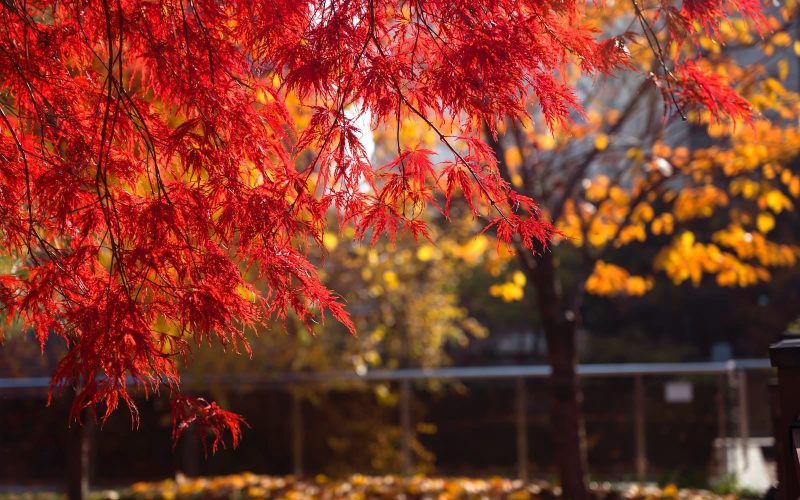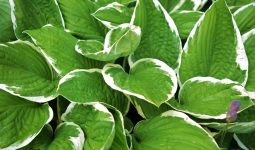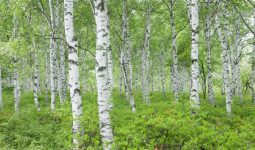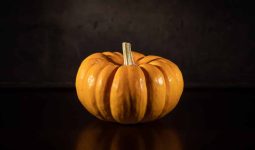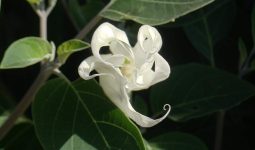There are several types of maple trees that you can find around the world. Some of the most well-known include the sugar maple, the red maple, and the silver maple.
The sugar maple is known for its delicious sap, which is used to make maple syrup.
The red maple is known for its striking red leaves in the fall, and the silver maple is known for its silver-coloured underside on its leaves.
Other types of maple trees include the Norway maple, the Japanese maple, and the mountain maple. Each of these trees has unique characteristics and is used for different purposes.
The ecosystem cannot exist without maple trees. They offer shelter, animal nourishment, and a potential source of wood.
Also, you might be surprised to learn that some maple trees can live for 200 years. Due to their extensive root systems and disease-resistant bark, maple trees can live for hundreds of years.
They are also tough and resilient. These unusual trees can grow in various environments, including urban settings, sandy beaches, and deep forests.
Additionally, they can endure even the most extreme weather, including heavy snowfall, ice storms, and periods of intense heat and drought.
Read on to learn about the different types of maple trees that can be grown around the world without difficulty.
1. Bigleaf Maple
Bigleaf Maples are impressive trees, and to say they would be an understatement. It is a gorgeous tree with enormous leaves constantly covered in ferns, lichens, and epiphytic mosses.
It is indigenous to the Pacific Northwest, where you can find it in riparian zones, open mixed or coniferous forests, and low to middle elevations within 190 miles of the coast. Also, it thrives in either full sun or light shade.
Our largest maple, the bigleaf, can grow up to 158 feet tall and has a 12-foot-diameter trunk. However, they typically only grow to a height of 75 feet.
Its enormous leaves have five sharply cut palmate lobes, typically each with one or two of their own, and measure 6–12” (up to 24”) across.
2. Sugar Maple
The most valuable and well-known member of the Acer genus, which includes these trees, is the Sugar Maple. Of course, there is syrup.
The lumber is essential for many products, including guitars, baseball bats, and fine woodworking.
Furthermore, it is indigenous to several Canadian provinces, extending south into Missouri and Virginia.
The tree can grow up to 80 feet tall and have a 3-foot diameter. This is one of the different types of maple trees.
3. Red Maple
The Red Maple (Acer rubrum), a stunning maple native to eastern North America’s woodlands from southern Canada to Florida and Texas, is found there.
It is a very adaptable tree that thrives in many environments, including swamps, dry upland soils, and a wide range of soil types and textures.
However, they prefer full sun to partial shade and are more prevalent in disturbed forests than mature ones. Their population has grown in their natural habitat due to human disturbance.
It is best known for its two to four inches long, three-lobed palmate leaves, which turn the brightest shade of red in the fall, though they can also occasionally turn yellow or orange.
4. Silver Maple
Eastern North America is home to the stunning Silver Maple. Contrary to its similar Latin name, Sugar Maple, Acer saccharum, should be distinct from this.
This tree is most notable for its 3–6” long, five-lobed, green leaves, stunningly silver-white underneath.
The long leaf stalks of the leaves flutter attractively in the wind, exposing their silver-white undersides. They change into a lovely yellow or occasionally orange in the fall.
Furthermore, It is a tree that grows quickly and is extremely adaptable; it can withstand different soil types, weather, water, and urban settings. It prefers full sun or part shade and cannot grow in complete shade.
Due to its tolerance, it was once frequently used as a street tree; however, it has shallow roots that can be aggressive. This is one of the different types of maple trees.
5. Black Maple
A variety of sugar maple is black maple. In recent years, it has been categorized as Acersaccharum ssp. nigrum was previously considered its species under the name Acer nigrum.
The difference between the two can be seen in the Black Maple’s typically three-lobed darker green leaves and the Sugar Maple’s typically five-lobed lighter green leaves.
The slightly sagging, dark green leaves change to a lovely golden-yellow hue in the fall; occasionally, reds and oranges can also be seen.
Black Maple has dark gray bark that occasionally resembles black. As it ages, the bark thickens and develops deep ridges, which makes for an intriguing winter feature.
Compared to Sugar Maple, Black Maple has a similar but slightly smaller range and tolerances. Also, it prefers moist soils and is typically found in river valleys and riparian areas.
6. Bigtooth Maple
Another species was just given a new classification as a Sugar Maple subspecies. It was formerly known as Acer grandidentatum, and many sources continue to use it.
It is a small to medium-sized tree with medium-sized leaves that have three to five blunt lobes.
Each of these lobes typically has three to five smaller lobes, which gives the tree its common name because they resemble large teeth. Fall brings out the most beautiful, vibrant red and gold in the leaves.
Although it typically grows at higher altitudes in the Rocky Mountains from Wyoming south to New Mexico, it can occasionally be found there, especially in Texas and Oklahoma.
Although it can grow in various soil types, it won’t tolerate salty soils or prolonged flooding. This is one of the different types of maple trees.
7. Norway Maple
The mid-1700s saw the introduction of the Eurasian species known as the Norway Maple to the United States.
Despite being a beautiful ornamental tree, it is invasive. Because it is a pioneer species, it can colonize bare ground before other plants. The tree grows quickly as well.
If you want shade, that’s good news. Where it can dominate the forest canopy, it is less advantageous. This maple is one of the different types of maple trees.
8. Rocky Mountain Maple
Compared to other maple trees, the Rocky Mountain Maple, which is one of the different types of maple trees, usually only reaches a height of 30 feet.
It usually has several stems that grow from the ground up and frequently stay as a big shrub.
One of our northernmost maples, it naturally grows in southeast Alaska. Additionally, as its name implies, it can frequently grow in the mountains throughout its range.
It has tiny leaves with three (rarely five) lobes and coarse teeth that turn yellow to reddish-orange in the fall. It has reddish stems and buds in the winter, adding a hint of seasonal colour.
Also, it has fragrant yellow flowers in the spring that emerge before or at the same time as the new leaves.
It grows well in both full sun and partial shade because it thrives in rocky soils and areas that have been burned, but it is uncommon in mature forests. This maple is one of the different types of maple trees.
9. Striped Maple
Another small tree or multi-stemmed shrub, the Striped Maple, is distinguished and distinctive by its striped bark.
When it is young, its frequently forked trunk has striped green and white bark. It gets more brownish with age, but the stripes stay.
It has three lobes that point forward on its soft, green, 3–6” long leaves. One of the leaf’s other common names comes from the way it resembles a goose foot.
The leaves turn a lovely bright yellow in the fall. Then, the striped bark gives the winter landscape an intriguing element.
Although it will grow in full shade, it prefers moist, well-drained soil and partial shade. It frequently develops slowly beneath the forest’s dense canopy.
10. Trident Maple
In the US, there is Trident Maple is an introduced species. It is common in this regard both domestically and internationally. Although it is also a bonsai plant, its native range is China and Japan.
The Trident Maple is highly valued in traditional Chinese medicine, just like many other species in this genus.
11. Vine Maple
Not to be confused with the Asian Vine Leaf Maple Acer cissifolium, Vine Maple is a native of the Pacific Northwest.
It’s interesting to note that it has closer kinship with Asian maples than North American species.
If you look at its leaves, which have 7–11 lobes instead of the typical 3-5, you can easily identify it.
The autumnal colours of the leaves—bright yellow, red, and orange—create a stunning display. The samaras frequently turn red in the spring and summer.
They are typically small trees or shrubs with narrow trunks rarely larger than 10 inches in diameter.
They frequently lean over and develop roots, like vines, where the branch contacts the ground. Furthermore, It makes the perfect landscape tree, especially where it is native.
It spreads horizontally when grown in full shade and unpruned, a trait not found in other maples. It will grow upright when grown in full sun.
12. Amur Maple
Acer ginnala, the Amur Maple’s former scientific name, has recently been replaced by Acer tataricum, a subspecies of the Tatarian Maple.
A small tree or multi-stemmed shrub, the amur maple. It has glossy three-lobed leaves, with the central lobe significantly larger than the side lobes.
The leaves change colour in the fall, sometimes turning a fiery red. It’s a very hardy maple that, with shelter, can live in USDA zone 2.
It can withstand drought and prefers moist soil and well-drained soil in full sun or partial shade. The leaves may scorch in full sun in warmer climates.
It has recently been as invasive and can spread both vegetatively and by seed. Minnesota and Connecticut in the USA currently have laws governing them.
13. Sycamore Maple
Sycamore Because it resembles the sycamore tree, maple is so named (Platanus spp). It has bark that, like sycamore, is smooth and gray when young but flakes in rectangular scales as it ages.
Although its leaves appear similar to sycamores on the surface, they are easily distinguished because they are arranged on the branches in opposite pairs rather than alternately, as in Platanus.
Its dark green leaves don’t turn colour in the fall like those of most maples, or if they do, they do so in a yellowish-brown hue. Instead of the fall colours, it is more frequently chosen for its tolerance.
Since it tolerates salt and pollution very well and prefers the full sun, this tree is a favourite for urban plantings and roadside vegetation. This tree is one of the different types of maple trees.
14. Florida Maple
Another maple that was once considered a separate species, Acer floridanum, has recently been classified as a subspecies of Sugar Maple, though only some sources reflect this.
It is a medium-sized to large tree with 3 to 5 lobed palmate leaves that are light green on top and covered in tiny white hairs on the undersides, leaf stalks, and frequently the leaf edges, giving them a very fuzzy appearance.
However, the leaves change from green to yellow and orange in the fall. Even though the fall foliage is not quite as showy as the Sugar Maple, it is still beautiful.
Its most well-known use is as a Sugar Maple substitute for people living in hotter climates, such as the southern United States, where maples typically do not thrive.
Since the Florida Maple evolved in hotter southern climates, it can withstand heat much better than its cousin.
15. Hedge Maple
Another Eurasian species established in gardens worldwide is the Hedge or Field Maple. It favours warmer climates with calcareous or alkaline soils that are well-drained.
Under ideal conditions for growth, this tree can reach a height of 45 feet. It stands out for having stunning fall foliage and colours. The majority of the time, the species is stable. But the Asian Longhorned Beetle can attack it.
16. Mountain Maple
Since it typically grows to fewer than 20 feet, the Mountain Maple needs to be revised. It usually grows in botanical gardens or moist woods. Its wood is sturdy, making it a great option for high-quality woodworking.
It is also important ecologically because it gives wildlife food and cover. The tree, like others of its kind, provides sweet syrup. This is one of the different types of maple trees.
17. Three-Flowered Maple
The Three-Flowered Maple is indigenous to China, North Korea, and South Korea in eastern Asia. Outside of institutional collections, it’s not the most well-known species.
It is a forest dweller in the wild and prefers well-drained soils. It is also very tall, rising to a height of 75 feet.
This maple puts on a show for the fall colour display, just like other maples do. This is one of the different types of maple trees.
18. Paperbark Maple
The papery bark of the Paperbark Maple is exquisitely orange-red to cinnamon in colour and peels off in strips.
Additionally, it has unusual leaves with three compound leaflets, occasionally mischaracterized as having deep three lobes.
The elliptic leaflets have a wax-like coating that rubs off, are shallowly lobed, and are green above and glaucus blue-green below.
The changing leaves’ brilliant red or orange hues create stunning fall colours. The papery bark gives the winter landscape more colour and texture.
It thrives in average well-drained soil, full sun or partial shade, and moderate moisture levels. While drought is tolerable, it cannot tolerate clay soil.
Furthermore, due to habitat fragmentation and its primarily non-viable seed production, it is an endangered species in its natural habitat, and only some mature individuals are left.
However, most non-viable seeds guarantee they won’t ever spread invasively. Cuttings are frequently used to create nursery trees.
19. Coral Bark Maple
The Coral Bark Maple lives up to its name by putting on a show all year. It is simple to appreciate the colours in many locations due to its plant hardiness zone range of 5-8.
Although its name suggests a salmon colour, it shines in a golden palette. Through the foliage and bark, the theme is maintained.
This maple will make a beautiful focal point in a great location. This is one of the different types of maple.
20. Douglas Maple
The Douglas Maple has a height of just over 30 feet and a diameter of 1 foot, giving it a tall but slender profile.
This tree can be found in Canada’s Pacific Northwest. Its distinctive quality is its golden autumn foliage.
This species prefers cool temperatures, even in Plant Hardiness Zone 4. It is a singular member of the genus, with leaves that don’t exactly resemble those of a maple.
21. Hornbeam Maple
The Hornbeam Maple gets its name from its leaves, which resemble hornbeams more than any other maple tree (Carpinus spp.).
The absence of lobes and the simplicity of the leaves make them unusual for maples. They have a double-toothed margin, an oval shape, and taper to a long point at the end.
They have an intriguing corrugated appearance due to their 18–24 pairs of very noticeable pinnate veins.
The leaves of the trees change from green to various hues of yellow and orange in the fall, creating stunning fall foliage.
The winged samaras frequently have yellow and orange feathers, giving the tree more colour.
Although it can grow in light, sandy, clay, and well-drained soil, it prefers moist soil. It works best in full sun or light shade. This is one of the different types of maple trees.
22. Boxelder
A fast-growing tree with multiple trunks, the boxelder is tolerant of hardiness zones 2 through 10.
Its unusual, pinnately compound leaves have 3–7 (or even up to 9) leaflets and resemble an ash tree more than a maple.
Interesting translucent light green, ovate to elliptic, toothless, or with only a few small, shallow lobes, the leaflets are also ovate to elliptic in shape.
Leaflets turn bright, vivid yellow (in northern regions) or orange-brown in the fall, adding colour (in southern areas).
Although no significant effects have been noted, it produces large amounts of fertile seeds and is invasive outside its native range.
It is indigenous to North America and significantly benefits local wildlife.




